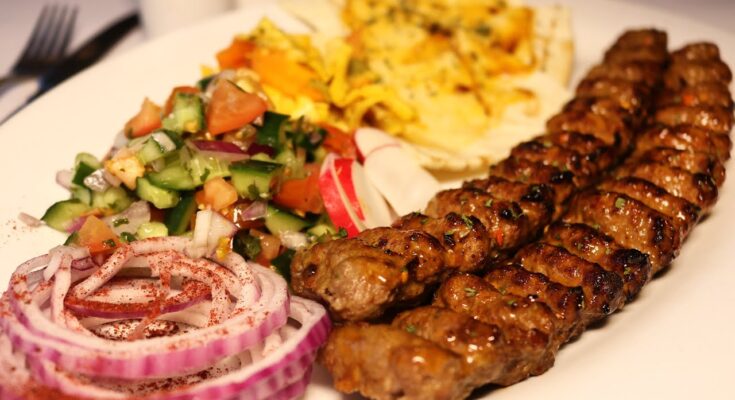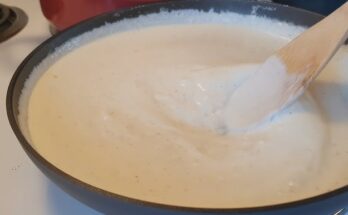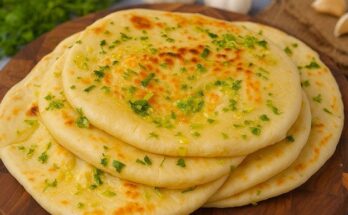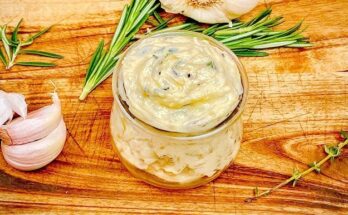Adana Kebab Recipe: If you’re craving bold, spicy, smoky flavors that hit just right, Adana Kebab is where it’s at. This Turkish favorite isn’t just any grilled meat—it’s a celebration of flavor, history, and culture, all rolled into one skewer.
Whether you’ve tasted it on the streets of Turkey or are discovering it for the first time, making it at home is easier than you think.
Let’s dive into this juicy, flavorful journey of how to master Adana Kebab right in your kitchen.
What is Adana Kebab?
Named after the southern Turkish city of Adana, this kebab is a fiery, fatty, and flavorful minced meat dish traditionally grilled over open charcoal. It’s known for its spiciness and distinctive texture, and unlike shish kebab which uses cubed meat, Adana is all about minced lamb, heavily seasoned with red pepper and kneaded by hand for optimal binding and flavor.
So, what makes Adana Kebab different from other kebabs? It’s the meat-to-fat ratio, the grinding technique, the spice level, and the grilling method. Unlike the milder Urfa Kebab, its cousin from the nearby city of Urfa, Adana Kebab packs heat and attitude. It’s not for the faint-hearted—but once you try it, there’s no going back.
Street vendors and restaurants in Turkey often grill it over charcoal and serve it alongside lavash bread, grilled vegetables, and tangy salads. The result? A dish that’s both rustic and refined, perfect for both casual BBQs and special feasts.
Ingredients You’ll Need
Main Ingredients:
- 1 kg ground lamb (preferably with 20–30% fat)
- 1 tablespoon red pepper flakes (Turkish pul biber if possible)
- 1 teaspoon black pepper
- 1 tablespoon paprika (sweet or hot)
- 1 large onion, finely grated
- 2–3 cloves of garlic, minced
- Salt to taste (about 1–1.5 teaspoons)
- Optional: 1 tablespoon tomato paste for extra umami
Optional Add-ins:
- Fresh parsley, finely chopped (for a fresh bite)
- Ground cumin (adds a warm, earthy flavor)
- A pinch of sumac (for tanginess)
Serving Suggestions:
- Lavash or pita bread
- Grilled tomatoes and peppers
- Thinly sliced onions with parsley and sumac
- Cacık (Turkish yogurt and cucumber sauce)
This ingredient list is simple, but trust us—each component plays a big role in flavor. The fatty lamb ensures a juicy kebab that sticks to the skewer and caramelizes beautifully over open flames.
Choosing the Right Meat for Adana Kebab
The heart of Adana Kebab is its meat. You want fresh, fatty lamb, ideally from the shoulder or belly, as these cuts naturally contain the amount of fat needed for that rich, juicy texture.
Why is fat important? It not only adds flavor but also helps the kebab stick together on the skewer and prevents it from drying out during grilling. Many people think lean meat is healthier—but for Adana, fat is flavor.
If you can’t find ground lamb with enough fat, you can grind it yourself at home using a meat grinder, mixing lamb shoulder with some lamb tail fat or beef fat. If you prefer beef, go for a mix of 80/20 lean-to-fat ratio. But fair warning: beef lacks the deep, gamey richness of lamb, and your kebab may turn out drier.
Tools You’ll Need in the Kitchen
To make authentic Adana Kebab, you’ll need a few essentials:
1. Skewers
Traditional Adana is cooked on wide, flat metal skewers that allow more surface area for the meat to cling to and cook evenly. Wooden skewers can work in a pinch, but they often can’t support the weight or heat.
2. Grill
Charcoal grill is king. It adds that smoky, authentic taste that gas grills just can’t replicate. That said, a stovetop grill pan or even an oven broiler can work in a pinch.
3. Meat Grinder or Food Processor
Grinding the meat yourself gives you control over texture and fat content. If you’re buying pre-ground meat, make sure it’s fresh and not too lean.
4. Mixing Bowl and Gloves
You’ll be kneading the meat mixture by hand for a good 10–15 minutes. Gloves make it cleaner and more hygienic.
Preparing the Meat Mixture
This step is the foundation of the entire recipe. It’s where flavor, texture, and binding all come together. You’ll want to work quickly but thoroughly.
Start by finely grating the onion and squeezing out any excess liquid. Wet onions can loosen the mix, and we want our kebabs to hold their shape. Mince the garlic and combine it with the lamb, spices, salt, and (if using) tomato paste.
Now comes the important part: kneading the meat. This isn’t just mixing—it’s about working the proteins in the meat so they bind properly. Use your hands to mash, squeeze, and turn the mixture for at least 10–15 minutes until it becomes sticky and uniform.
Once mixed, let it rest in the fridge for at least 30 minutes, or up to overnight. This allows the flavors to meld and the meat to firm up for skewering.
Essential Spices for Authentic Flavor
Authenticity in Adana Kebab comes down to the right blend of spices. Here’s what you can’t skip:
- Pul Biber (Turkish red pepper flakes): Gives the kebab its signature color and spicy kick.
- Paprika: Adds depth, smokiness, and sweetness.
- Salt & Black Pepper: Basic, but essential for balance.
- Optional: A pinch of cumin or sumac for extra earthiness or tang.
Avoid overpowering the meat—Adana Kebab isn’t about covering up the flavor of lamb, but enhancing it with heat and spice.
Step-by-Step Guide to Making Adana Kebab
Here’s how to bring all the flavors together:
Step 1: Grind the Meat
If using whole cuts, trim and grind the lamb with fat through a coarse plate. You want small, visible fat specks.
Step 2: Mix the Meat
Add all your spices, grated onion, garlic, and knead thoroughly. It should be sticky enough to form a mass that doesn’t fall apart.
Step 3: Shape onto Skewers
Wet your hands and press a handful of meat onto each skewer, pressing and flattening it out about 1/2 inch thick. Taper the ends slightly for a traditional look.
Step 4: Grill
Preheat your grill. Cook over medium-high charcoal heat for about 3–4 minutes per side, turning only once. The outside should have a nice char while the inside stays juicy.
How to Shape the Perfect Adana Kebab
This is where many people slip up. Shaping the kebab correctly is more important than it seems—it’s not just about aesthetics, but functionality. If you don’t shape it right, it’ll fall off the skewer or cook unevenly.
Here’s how to do it right:
- Wet your hands with cold water before handling the meat. This prevents sticking and helps in shaping.
- Take a small handful of the meat mixture, about the size of a tennis ball.
- Press it gently onto the skewer. Start at the top, working your way down. Flatten the meat using your thumb and fingers until it’s about ½ inch thick all around.
- Taper both ends for a clean, traditional look.
- If you feel the meat isn’t sticking, refrigerate it for 15–30 more minutes before trying again.
Tips for success:
- Don’t overload the skewers. If the kebab is too thick, it won’t cook evenly.
- Use wide, flat skewers—round ones won’t hold the meat as well.
- Try not to handle the kebab too much once it’s on the skewer, or it might loosen.
It takes some practice, but once you get the hang of it, shaping becomes second nature. Your goal? A long, even kebab that cooks evenly and looks like it came straight from a Turkish grill house.
Grilling Techniques for the Perfect Char
Grilling is where all your effort pays off. That signature smoky char and juicy center? It’s all about heat control, timing, and turning.
Here’s how to grill Adana Kebab like a pro:
- Use charcoal if possible—it’s the gold standard. Gas grill or grill pan works too, but it won’t give you the same deep, smoky flavor.
- Preheat your grill to medium-high. You want a hot surface to get that quick sear.
- Place the skewers on the grill, spacing them evenly.
- Grill for 3–4 minutes per side. Don’t flip them too early; wait until the meat is nicely charred and has formed a crust.
- Baste with a little melted butter or oil mid-cook for extra richness.
- Use tongs, not a fork—piercing the meat lets the juices escape.
The kebabs should be juicy on the inside with crisp, charred edges. Keep a close eye on them—overcooking ruins everything. If you’re using a gas grill, consider adding a small tray of soaked wood chips for that authentic smokiness.
Serving Suggestions for Adana Kebab
Presentation is half the experience. You want your plate to look as good as it tastes.
Here’s how Adana Kebab is traditionally served in Turkey:
- On a bed of lavash or pita bread, which soaks up the juices beautifully.
- With grilled tomatoes, onions, and green peppers right off the fire.
- A side of fresh onion salad, sprinkled with sumac and chopped parsley.
- Optional but amazing: a spoon of buttery bulgur pilav.
Don’t forget a squeeze of lemon juice over the meat just before serving—it cuts through the richness and adds a zesty kick. And for the full Turkish experience, pair it with a cold glass of Ayran (salty yogurt drink) or even a light red wine if you’re feeling fancy.
What to Serve With Adana Kebab
To make it a full meal, you’ll want a mix of carbs, veggies, and something cool and refreshing. Here’s what we recommend:
Grilled Vegetables
- Tomatoes, onions, eggplant, and green peppers.
- Brushed with olive oil and grilled until charred.
Pilav (Rice or Bulgur)
- Turkish-style rice or bulgur pilav makes the perfect base.
- Use chicken broth and a bit of tomato paste for flavor.
Cacık (Yogurt & Cucumber Dip)
- Similar to tzatziki but thinner.
- Yogurt, garlic, grated cucumber, mint, and salt.
- Serve chilled to balance the spicy kebab.
Gavurdağı or Shepherd’s Salad
- Chopped tomatoes, cucumber, onion, parsley, olive oil, and lemon juice.
- Fresh and zesty—perfect contrast to the rich meat.
With this combo, your guests won’t just be full—they’ll be raving about your cooking for days.
Tips for Making Restaurant-Quality Adana Kebab at Home
If you’re looking to impress, here are a few pro tips to elevate your kebab game:
- Chill your mixture before shaping. This helps it bind better to the skewer.
- Use fresh spices—old spices lack punch and dull the flavor.
- Don’t overcook! Aim for a juicy inside, not dry and crumbly meat.
- Work the meat thoroughly. Proper kneading is what sets Adana apart from other minced meat recipes.
- Grill over charcoal for that true smoky flavor.
Avoid shortcuts—good kebab takes time, care, and love. But the end result? Totally worth it.
Can You Make Adana Kebab Without a Grill?
No grill? No problem. You can still enjoy a solid homemade Adana experience.
Oven Method:
- Preheat oven to 475°F (245°C).
- Line a tray with foil and place skewers on a rack.
- Roast for about 12–15 minutes, turning once halfway.
Pan-Seared Version:
- Use a non-stick or cast-iron pan.
- Shape the kebab into long patties instead of skewers.
- Cook on medium-high heat for 4–5 minutes per side.
Air Fryer Option:
- Set air fryer to 400°F (200°C).
- Cook shaped kebabs for 10–12 minutes, turning halfway.
While none of these replicate charcoal’s smokiness, they still give you a delicious, spicy, meaty bite you’ll love.
Storage and Reheating Tips
Got leftovers? Lucky you.
To Store:
- Keep raw kebab mixture in an airtight container in the fridge for up to 2 days.
- Shaped kebabs can also be frozen for up to a month—just thaw before grilling.
To Reheat:
- Warm leftover kebabs in a low oven (300°F) for 8–10 minutes.
- Or reheat gently in a covered skillet with a splash of water to avoid drying.
Avoid microwaving—they’ll lose their texture and become rubbery.
Variations of Adana Kebab
Adana is flexible. Here are a few fun ways to remix it:
- Urfa Kebab: Same method but no chili—mild and kid-friendly.
- Chicken Adana: Use ground chicken thighs instead of lamb.
- Adana Wraps: Serve in lavash with sauces and veggies for a street food-style wrap.
- Vegan Version: Use lentils and bulgur with spices and grill like a patty.
Each variation brings a new twist to the classic, while still keeping that core Turkish flavor intact.
Nutritional Information (Per Serving)
| Nutrient | Amount (Approx.) |
|---|---|
| Calories | 420 kcal |
| Protein | 28g |
| Carbohydrates | 4g |
| Fat | 33g |
| Saturated Fat | 12g |
| Fiber | 1g |
| Sugar | 1g |
| Sodium | 600mg |
Keep in mind, these values will change depending on fat content and serving size. To make it healthier, use leaner meat and grill rather than pan-fry.
FAQs about Adana Kebab Recipe
1. Can I use beef instead of lamb in Adana Kebab?
Yes, you can, but it won’t have the same richness. Aim for an 80/20 lean-to-fat ratio for best results.
2. Is Adana Kebab very spicy?
Traditionally, yes—it packs a spicy punch. But you can adjust the heat by reducing the red pepper flakes.
3. What’s the difference between Adana and Urfa Kebab?
Adana is spicy, while Urfa is milder. Both use similar techniques and meat but differ in seasoning.
4. Can I make Adana Kebab in advance?
Absolutely! You can prep the meat mix a day ahead and refrigerate. Just shape and grill when ready.
5. How do I prevent the meat from falling off the skewers?
Make sure the meat is kneaded well, chilled before shaping, and use wide, flat skewers.
Conclusion
Adana Kebab isn’t just food—it’s an experience. From its bold flavors to its sizzling aroma, it’s a dish that turns any meal into a feast. Whether you’re hosting a BBQ or just cooking up a storm for yourself, learning how to make Adana Kebab at home connects you with centuries of Turkish culinary tradition.
So go ahead—fire up that grill (or oven), roll up your sleeves, and bring a little taste of Adana into your kitchen. One juicy bite, and you’ll understand why this kebab is beloved around the world.



